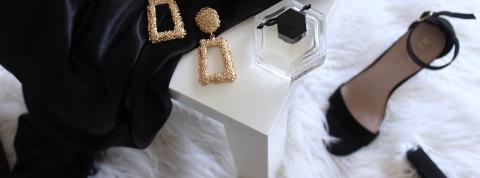
How to become a Personal Shopper?
How to become a Personal Shopper?
Navigating the world of fashion can be a challenge, but for some it's a passion and a natural talent. Becoming a Personal Shopper offers an exciting opportunity to turn that passion into a career, helping others discover their unique style. This article explores the steps involved in becoming a Personal Shopper, the keys to finding clients and examines the potential salary in this fascinating field.
Personal Shopper: Definition
A Personal Shopper is a fashion professional who works with individual clients to help them define and refine their personal style. Going beyond simply recommending clothes, the Personal Shopper offers a tailor-made experience, taking into account each client's personal preferences, lifestyle and budget. He becomes the personal fashion guide, simplifying the buying process and helping to create wardrobes that reflect each individual's personality and confidence.
How do I become a Personal Shopper?
1. Education and Training
Although formal, an education in fashion or styling can be an asset. However, practical experience and an in-depth understanding of fashion trends are often just as crucial. Internships, styling courses and certifications can also enhance your skills.
2. Develop an in-depth knowledge of fashion
A Personal Shopper needs to be constantly aware of the latest trends, emerging designers and brands. Reading fashion magazines, following influential blogs and attending industry events are essential ways to stay up to date.
3. Build a professional network
Building relationships with retailers, brands and other fashion professionals is essential. The wider your network, the more access you'll have to a variety of styles and products to meet your customers' needs.
4. Create an impressive portfolio
A portfolio that showcases your styling skills and previous collaborations is crucial. This can be in the form of photos of looks you've created, testimonials from satisfied clients, or even collaborations with local fashion brands.
How can I find clients as a Personal Shopper?
1. Use social media
Create an engaging online presence on social media by sharing your fashion knowledge, style tips and examples of your work. Social networks such as Instagram can be powerful tools for attracting attention and building a following.
2. Offer workshops and events
Hold styling workshops, seminars or attend local events to showcase your skills and meet potential clients.
3. Work with boutiques and brands
Work with local fashion shops or brands to offer your services as a Personal Shopper. This can help you attract clients and build your reputation.
What does a Personal Shopper earn?
The salary of a Personal Shopper can vary depending on a number of factors, including location, experience and clientele. Rates can be set per hour, per shopping session, or even as a package. On average, novice Personal Shoppers can earn around €20 to €50 per hour, while seasoned professionals can achieve hourly rates of €100 to €200 or more, depending on demand and clientele. It's important to note that these figures are general estimates and may vary depending on the specific circumstances of each professional.
In conclusion, becoming a Personal Shopper requires not only a passion for fashion, but also a thorough understanding of individual needs. With the right education, practical experience and an effective online presence, you can turn your love of fashion into a rewarding and personalised career.
